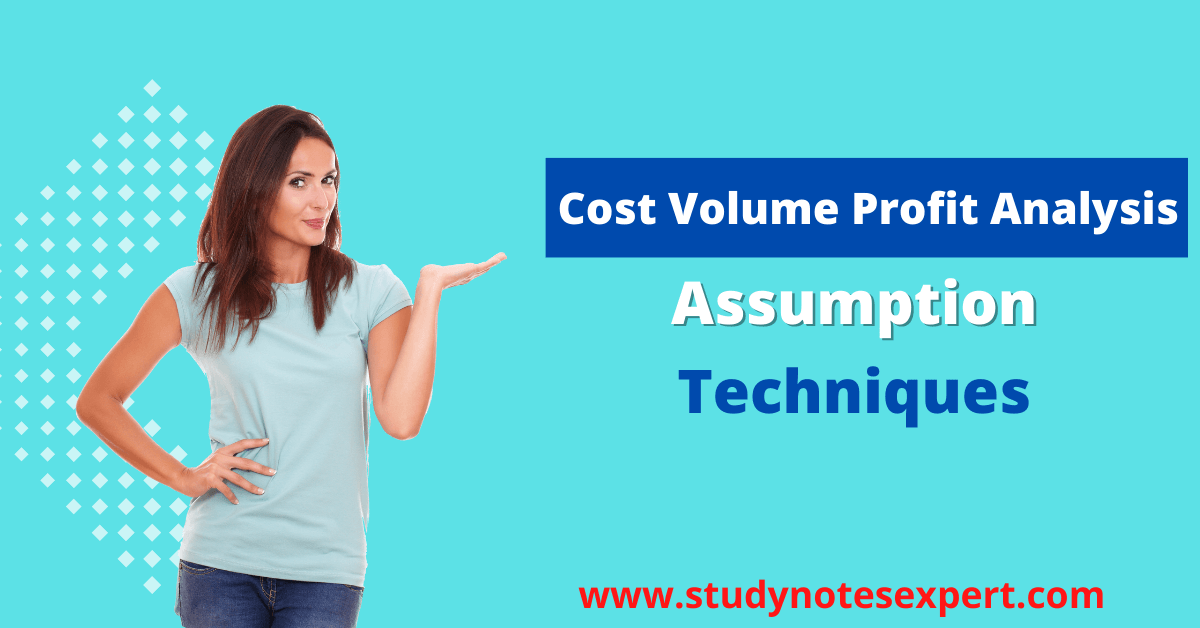Cost Volume Profit analysis (CVP) establishes the relationship between cost, volume, and profit associated with a product. Many factors impact the business’s profitability; however, the most important determinants are the cost of production, sales volume, and selling price.
According to Herman C. Heiser. “The most significant single factor in profit planning of the average business is the relationship between the volume of business, costs, and profits.” The CVP relationship is an important tool used for the profit planning of a business.
CVP analysis uses costs, volume, and profit figures. These factors are interrelated as sales price impacts the profit of concern and, in turn, is determined by the costs incurred for production. The production volume determines the costs, which are impacted by the expected sales volume. CVP analysis endeavors to analyze the relationship between volume change and cost changes.
Assumption of Cost Volume Profit Analysis
Cost Volume Profit Analysis uses the following assumptions:
i) Total costs comprise fixed costs and variable costs.
ii) Variable Costs change with the output level, while Fixed Costs remain the same regardless of output volume.
iii) Selling Price per Unit remains the same for different sales quantities.
iv) The business sells only one type of product. In the case of a multi-product business, the sales mix remains the same throughout.
v) Volume of production equals sales volume, and thus, there is no opening or closing stock
vi) The efficiency and productivity level remain constant.
vii) Material Prices, wages rates, and other factors remain the same for all production levels.
Legitimate Techniques of CVP Analysis
CVP analysis uses sales volume, selling price, variable cost per unit, and total fixed costs. The main techniques for CVP analysis are:
- Contribution Margin
- Profit/Volume Ratio
- Break Even Analysis
Contribution Margin
Contribution is also known as “marginal cost of sales.” It is calculated by deducting variable costs from sales. Other terms used for contribution are “Gross Margin” and “Contribution Margin.” It denotes the excess of sales over variable costs. Contribution can be represented as:
- Contribution = Sales – Variable (Marginal) Cost
- Contribution (per unit) = Selling Price per unit- Variable (or Marginal) cost per
- Contribution = Fixed Costs+ Profit (Loss)
Uses of Contribution
Contribution is helpful for the following purposes:
i) Contribution helps calculate net income and break-even analysis.
ii) Contribution margin is used for calculating the break-even point, desired income sales, and product line decision. It is also helpful for pricing and bonus decisions.
iii) Contribution explains the relationship between sales and profit.
iv) Contribution Income Statement is used to calculate the contribution margin. This statement groups fixed and variable costs.
Advantages of Contribution
The following are the main advantages of contribution:
i) It helps managers in fixing sales prices.
ii) It helps calculate break-even points. It also helps in divisible profits.
iii) It helps determine the appropriate product mix.
iv) It helps determine the most efficient production method.
v) It can be used for making or buying decisions.
vi) It can be used for making decisions like adding and dropping product lines.

